
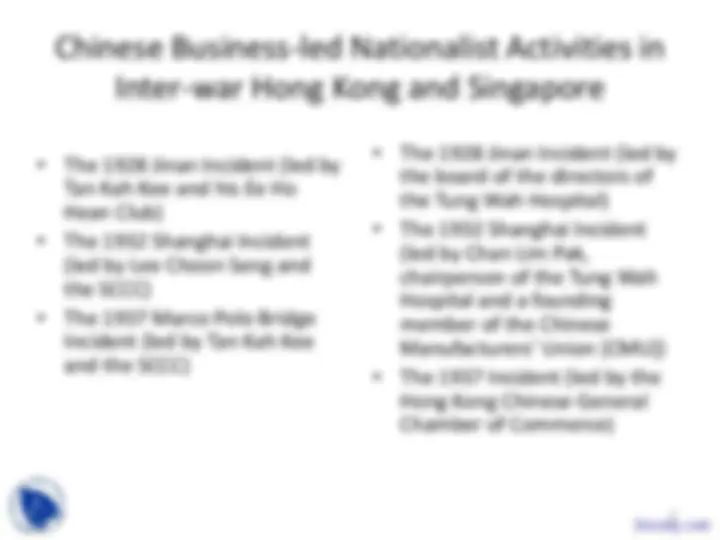
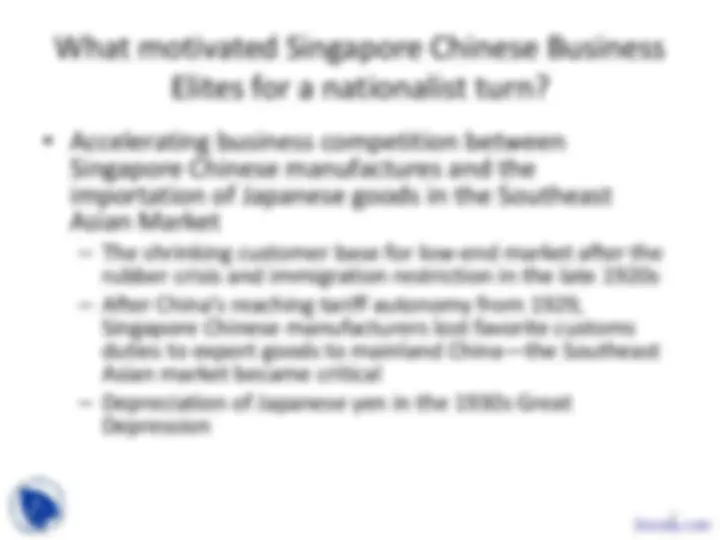
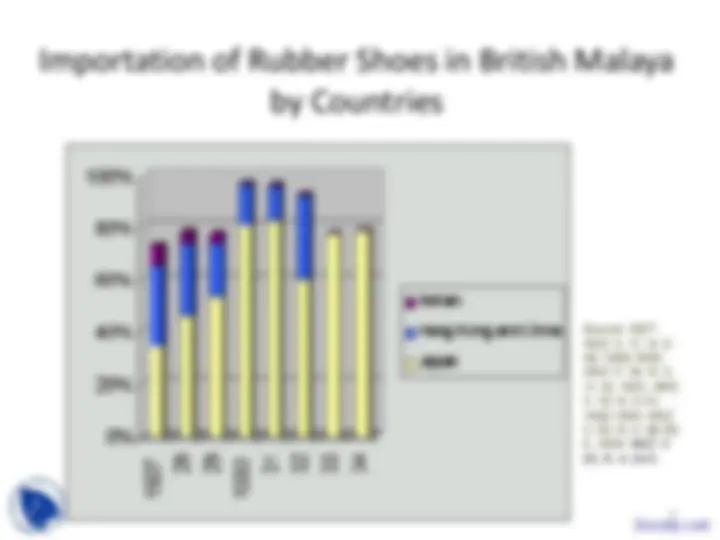
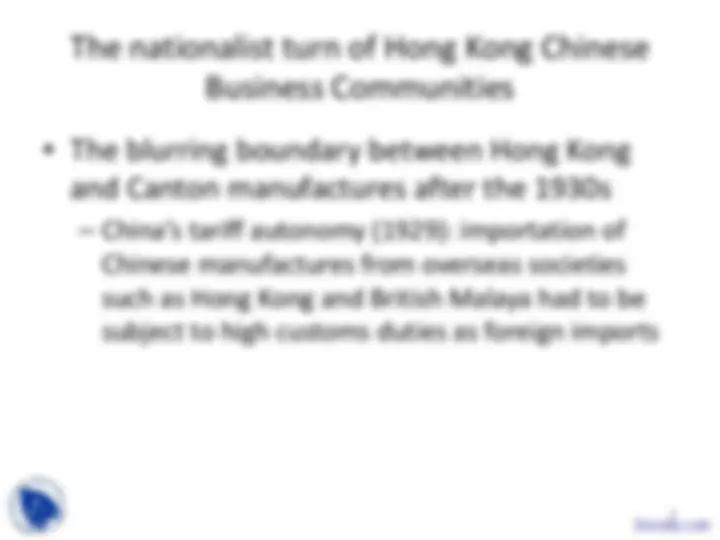
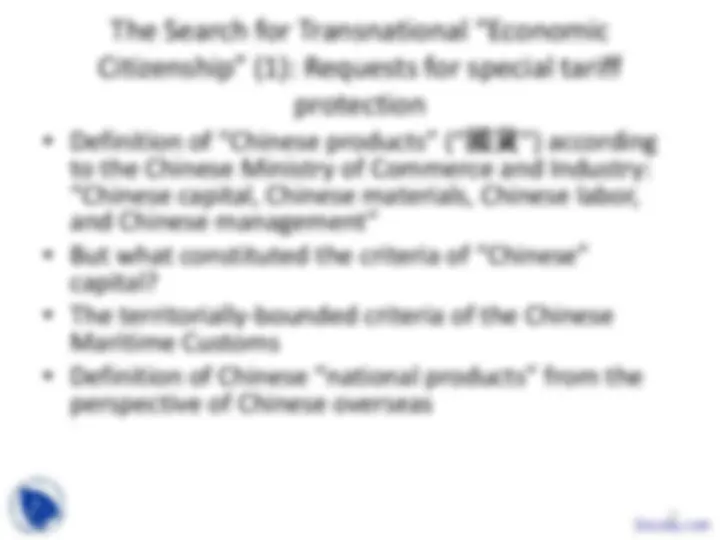
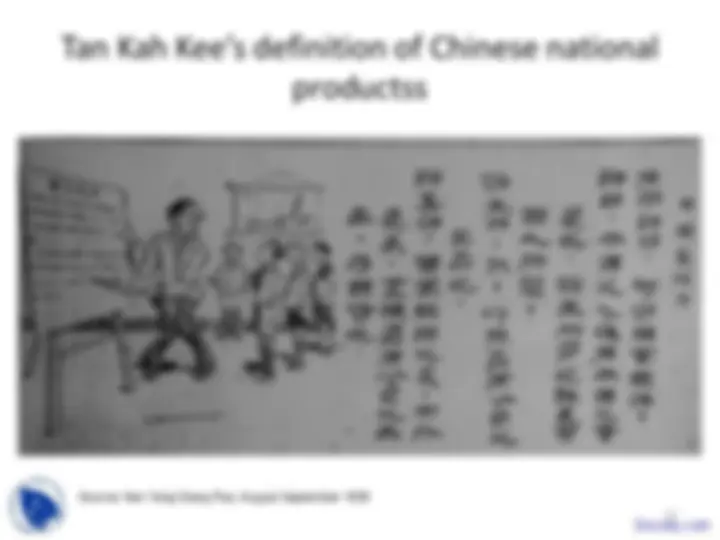
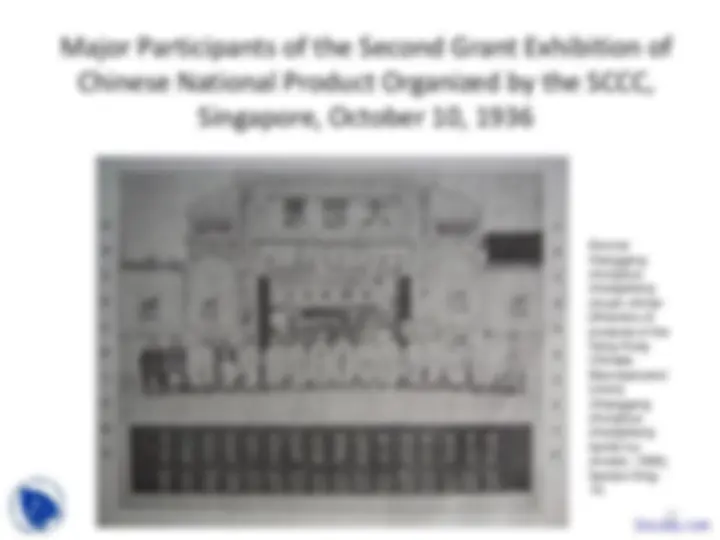
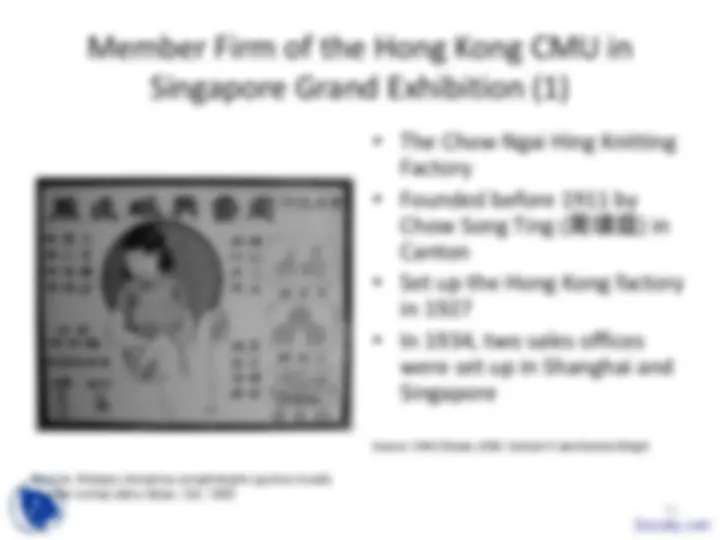
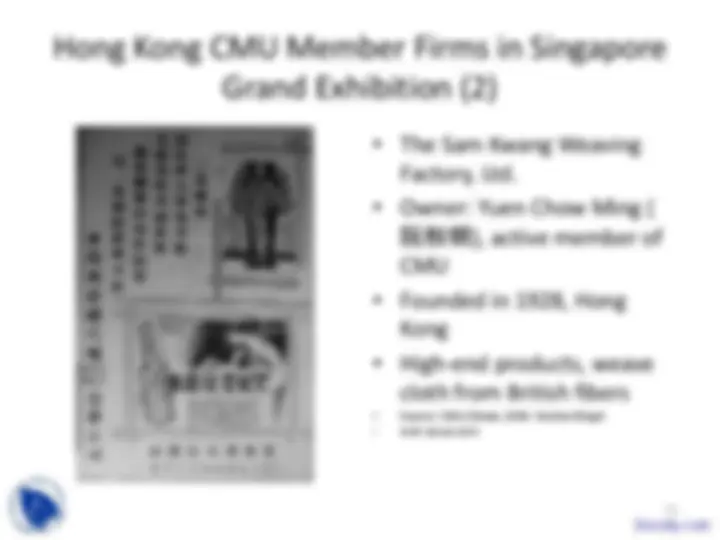


Study with the several resources on Docsity

Earn points by helping other students or get them with a premium plan


Prepare for your exams
Study with the several resources on Docsity

Earn points to download
Earn points by helping other students or get them with a premium plan
Community
Ask the community for help and clear up your study doubts
Discover the best universities in your country according to Docsity users
Free resources
Download our free guides on studying techniques, anxiety management strategies, and thesis advice from Docsity tutors
The role of chinese business elites in singapore and hong kong during the inter-war period, focusing on their nationalist activities and the motivations behind their pursuit of economic citizenship. The text delves into specific incidents, such as the jinan incident and the shanghai incident, and discusses the impact of business competition, tariff autonomy, and the great depression on their decisions. It also examines the organization of exhibitions of 'national products' and the participation of major firms in these events.
Typology: Slides
1 / 16

This page cannot be seen from the preview
Don't miss anything!










Singapore Chinese manufactures and the
importation of Japanese goods in the Southeast
Asian Market
rubber crisis and immigration restriction in the late 1920s
Singapore Chinese manufacturers lost favorite customs
duties to export goods to mainland China—the Southeast
Asian market became critical
Depression
Source: 1927: NKZ , V. 17, N. 5: 48; 1928-1930: NKZ , V. 18, N. 3, 11-12; 1931, NKZ , V. 19, N. 3:13; 1932-1933: NKZ , V. 20, N. 4: 38-39;
Big Three Singapore Chinese Rubber
Manufactures
Japanese
imports
Tan Kah**
Kee &
Co.
People's
Rubber
Goods
Manufactory
Nanyang
Manufac-
turing
Co.
95 cents 65 cents 80 cents 63 cents
and Canton manufactures after the 1930s
Chinese manufactures from overseas societies
such as Hong Kong and British Malaya had to be
subject to high customs duties as foreign imports
Source: Nan Yang Siang Pao, August-September 1930
Source: Xianggang zhonghua changshang lianhehui xinxia kaimu qingdian tekan, 1964: 22.
Major Participants of the Second Grant Exhibition of
Chinese National Product Organized by the SCCC,
Singapore, October 10, 1936
Source: Xianggang zhonghua changshang chupin zhinan [Directory of products of the Hong Kong Chinese Manufacturers’ Union] (Xianggang zhonghua changshang lianhe hui chuban, 1936), Section Ding-
Factory
Chow Song Ting (周頌庭) in
Canton
in 1927
were set up in Shanghai and
Singapore
Source: CMU Zhinan, 1936: Section Yi and Section Bing-
Source: Xinjiapo zhonghua zongshanghui guohuo kuoda zhanlan tuixiao dahui tekan, Oct. 1935